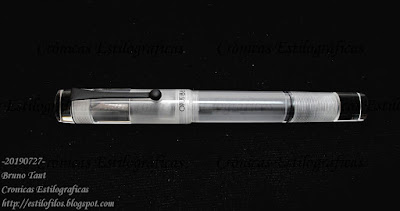On this scenario, the Opus 88 Koloro made its appearance in 2017.
The company Opus 88 –Jin Gi industrial Company— has been in the market since 1977. But from 1988 on its main business was the production of OEM pens for other companies, Danitrio and Taccia among them. In the local market of Taiwan, Opus 88 sold some over-run of those OEM pens under its own brand.
Then, the Koloro model showed up in the foreign market in 2017. Its combination of an affordable price –in the range of EUR 100-- and an unusual filling system called the attention of many in the West. As I explained in the previous text, it is not that the Japanese eyedropper system was new at all, but its availability was very limited and expensive.
Nowadays, the Koloro is a family of pens that come in two nib sizes—size 5 and size 6, both by JoWo. The nibs are made of steel –no gold option--, and the feeds are made of plastic. The nib size conditions the overall dimensions of the pen. But in all cases, the filling system is the Japanese eyedropper.
Opus 88 could make these pens even more attractive by using in-house nibs or, at lest, nibs locally made. The implementation of ebonite feeds –and there are makers producing them-- would also increase the appeal of the pen. However, these two drawbacks are common to many pen companies.
These are the dimensions of the Opus 88 Koloro demonstrator of size 6:
Length closed: 148 mm
Length open: 136 mm
Length posted: this pen does not post.
Diamter: 16.4 nn
Weight: 30 g (inked)
Ink deposit: about 3 ml
In conclusion, this pen is an attractive product –well made, affordable, original— that fills a gap in the pen scene. And that is more than most other companies offer nowadays.
Parker 51 (Inky.Rock's) – De Atramentis Beethoven
Bruno Taut
Nakano, September 2019
etiquetas: soluciones técnicas, Eboya, Opus 88, mercado, JoWo, Taiwan
Bruno Taut
Nakano, September 2019
etiquetas: soluciones técnicas, Eboya, Opus 88, mercado, JoWo, Taiwan

























